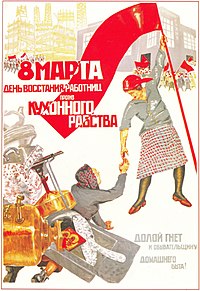This is a lesson plan which has usually worked pretty well with my groups and that I first heard of from one of my teachers, Bruce McGowen, a long time ago during a course abroad. It has, however, been adapted, changing celebrities and extending it over the years to meet the reality within my classroom. I had originally planned to 'launch' this Internet lesson coinciding with the 50th anniversary of Gagarin's journey into outer space and the proximity of World Book Day on the 23rd April, but several setbacks made it impossible. Anyway, you may either choose to leave it for next year's World Book Day celebration or implement it whenever you feel it's the right time for it.
This lesson consists of several phases: a pre- browsing task where the language is presented and SS are encouraged to predict the contents, a while- browsing stage going from controlled to less controlled tasks and finally a response which involves a change of skill and further language work.
STAGE 1: LANGUAGE IMPUT
STAGE 2: DIRECTED BROWSING TASKS
- task one: getting into the internet
- task two: the game
STAGE 3: SKILL- FOCUSSED TASKS
- task one: completing the chart
- task two: speaking
- task three: writing
______________________________________________________
STAGE 1: LEAD- IN
1. The teacher writes the following two names on the board:
SYLVESTER STALLONE MUHAMMED ALI
And elicit that these two people have one thing in common: boxing- but that their interest in boxing is different: Sylvester Stallone acted as a boxer in the Rocky movies whereas Muhammed Ali was a real boxer.
And elicit that these two people have one thing in common: boxing- but that their interest in boxing is different: Sylvester Stallone acted as a boxer in the Rocky movies whereas Muhammed Ali was a real boxer.
2. With the help of a projector the teacher builds up this model to introduce LINKERS.
STAGE 2: DIRECTED BROWSING TASKS
1. The teacher divides the class into teams of four making sure each team has access to at least two computers and get the SS to name their teams if appropriate.
2. The teacher writes the following three names on the board:
YURI GAGARIN BUDDY HOLLY CARLOS GARDEL
And finds out what the students know about them or tells that Yuri Gagarin was a famous astronaut, Russian...etc and that Buddy Holly was a famous American singer in the 1950s whereas Carlos Gardel was an actor and tango singer. Then the teacher tells the SS that these three have something in common. They are going to find this out on the web.
TASK ONE |
Yuri Gagarin, Buddy Holly and Carlos Gardel. What do they have in common? Follow the instructions below and find the answer as quickly as possible:
|
1. Get into the Internet
|
2. Type: http: //www.biography.com in the address box
|
3. Press enter (return)
|
4. Type the name you need in Find
|
5. Click on Find
|
6. Click on the name you need
|
After a while, students may have found the answer and the teacher should conduct feedback (see teacher's notes) and make students reflect on the skills they have used to find the information:
- They do not need to read every word
- They only have to focus on content words
- The words at the beginning of the sentence give a clue about the whole sentence so they can accept or reject sentences quickly and move on to the next one.
- They should not use their fingers to point to the text word by word.
- They do not need to read the text aloud.
TASK TWO: THE GAME
The class will now play a game in their teams. The teacher puts on the board the first pair of names. Each team must find their biographies and what they have in common. The first team to produce the correct answer will get two points. Then, with a second pair of names ...etc. Check out the teacher's notes for the answers.
The pair
|
Answers
| |
Marlon Brando
|
Carlos Marcello
| |
George Harrison
| ||
Mahatma Gandhi
|
John Lennon
| |
Janis Joplin
|
Marilyn Monroe
| |
STAGE 3: SKILLS- FOCUSED TASK (more detailed reading in pairs)
The teacher tells the class to go to Wikipedia. They will now in pairs research two other people, find out what they have in common and fill in the biography grid below. Person A of the pair is given the name William Shakespeare. Person B, Miguel de Cervantes Saavedra.
TASK ONE: Fill in the biography grid below
TASK ONE: Fill in the biography grid below
Person 1
|
Person 2
| |
Name
| ||
When born?
| ||
Where born?
| ||
Occupation
| ||
Achievement/s?
| ||
Date of death?
| ||
Other interesting information?
| ||
Common fact |
POST- BROWSING (change of skill)
TASK TWO
After completing their own chart individually, SS should talk to their partner and describe the life of their famous person and see if they find out what both have in common.
TASK THREE: PARAGRAPH COMPOSITION
SS are asked to write a comparison account of their two characters following the model provided in the lead-in by means of past tenses and contrasting linkers.
NB: I suggest using biography.com but you may as well decide to use Wikipedia. Yuri Gagarin's picture was taken from Wikipedia Commons.







